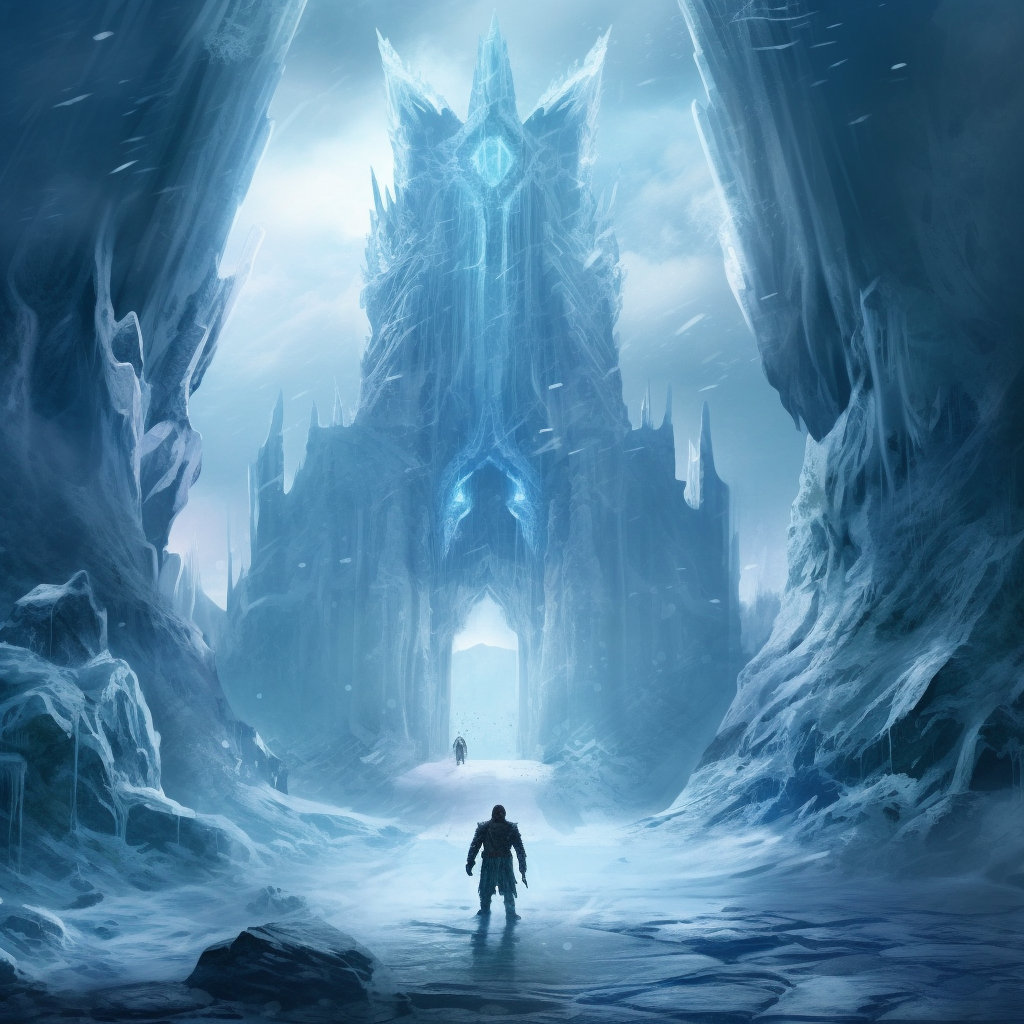Niflheim : History and Origin

Niflheim from Old Norse Niflheimr, "World of Fog" is one of the nine worlds in Norse mythology, it represents the world of mist, cold and ice. As such it is the opposite cosmological principle of Muspelheim, the world of fire and heat.
The origin of Niflheim
In the Scandinavian creation story told by the medieval Icelandic Christian historian Snorri Sturluson, the first being, the giant Ymir, was born when the ice of Niflheim and the fire of Muspelheim met in the middle of Ginnungagap, the abyss that had once separated them.
The word "Niflheim" is found only in Snorri's works and is often used interchangeably with "Niflhel", a poetic embellishment of "Hel", the world of the dead. "Niflhel" is found in Old Norse poems that are much older than Snorri's works. It is quite possible that the word "Niflheim" was invented by Snorri. It is impossible to know whether the accompanying concept is of such late and spurious origin, for our only source for anything purporting to be a complete account of the pagan Norse creation account comes from the works of Snorri.
Niflheim's most notable feature was that it was a dreadful, freezing realm of cold. For a Hyperborean people who truly appreciated the potential hostility of the wilderness, this correlation is quite understandable. Indeed, one cannot help but remember that for the Icelanders, the "cold" came from Niflheim in the north, the domain of Hel, this link is further illustrated by the location of the Hvergelmir, the source of the Nordic rivers. freezing, inside Niflheim:
The world of mist, Niflheim, was created long before the earth was shaped; and in the middle of it is the well called Hvergelmir, from which flow the rivers called Ylgr, Víd, Leiptr, Fjörm, Fimbulthul, Svöl, Gunnthrá, Slídr and Hríd, Sylgr.
Niflheim, the world of the dishonored.
In addition to its role in the creation of the cosmos, Niflheim provides a final resting place for the dishonored dead. Hel, the sinister giantess whose rules over the deceased are ruled by the deceased, also dwells here.
This description contrasts with the glorious atmosphere of camaraderie and festivities that await the warriors of Valhalla. However Niflheim was considered the resting place of great occult knowledge thanks to its deceased souls who are buried there.
Indeed, "the land of the dead, the underworld or Niflhel, is then not only the repository of all life, but also the repository of all knowledge, and therefore of the practice of retrieving wisdom from the land of the dead. Affirming this idea, Vafthruthnir, the cunning giant, admitted that his wisdom was largely gleaned from his various encounters with the dead.
Niflheim from Old Norse Niflheimr, "World of Fog" is one of the nine worlds in Norse mythology, it represents the world of mist, cold and ice. As such it is the opposite cosmological principle of Muspelheim, the world of fire and heat.
The origin of Niflheim
In the Scandinavian creation story told by the medieval Icelandic Christian historian Snorri Sturluson, the first being, the giant Ymir, was born when the ice of Niflheim and the fire of Muspelheim met in the middle of Ginnungagap, the abyss that had once separated them.
The word "Niflheim" is found only in Snorri's works and is often used interchangeably with "Niflhel", a poetic embellishment of "Hel", the world of the dead. "Niflhel" is found in Old Norse poems that are much older than Snorri's works. It is quite possible that the word "Niflheim" was invented by Snorri. It is impossible to know whether the accompanying concept is of such late and spurious origin, for our only source for anything purporting to be a complete account of the pagan Norse creation account comes from the works of Snorri.
Niflheim's most notable feature was that it was a dreadful, freezing realm of cold. For a Hyperborean people who truly appreciated the potential hostility of the wilderness, this correlation is quite understandable. Indeed, one cannot help but remember that for the Icelanders, the "cold" came from Niflheim in the north, the domain of Hel, this link is further illustrated by the location of the Hvergelmir, the source of the Nordic rivers. freezing, inside Niflheim:
The world of mist, Niflheim, was created long before the earth was shaped; and in the middle of it is the well called Hvergelmir, from which flow the rivers called Ylgr, Víd, Leiptr, Fjörm, Fimbulthul, Svöl, Gunnthrá, Slídr and Hríd, Sylgr.
Niflheim, the world of the dishonored.
In addition to its role in the creation of the cosmos, Niflheim provides a final resting place for the dishonored dead. Hel, the sinister giantess whose rules over the deceased are ruled by the deceased, also dwells here.
This description contrasts with the glorious atmosphere of camaraderie and festivities that await the warriors of Valhalla. However Niflheim was considered the resting place of great occult knowledge thanks to its deceased souls who are buried there.
Indeed, "the land of the dead, the underworld or Niflhel, is then not only the repository of all life, but also the repository of all knowledge, and therefore of the practice of retrieving wisdom from the land of the dead. Affirming this idea, Vafthruthnir, the cunning giant, admitted that his wisdom was largely gleaned from his various encounters with the dead.




























